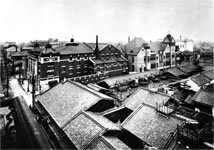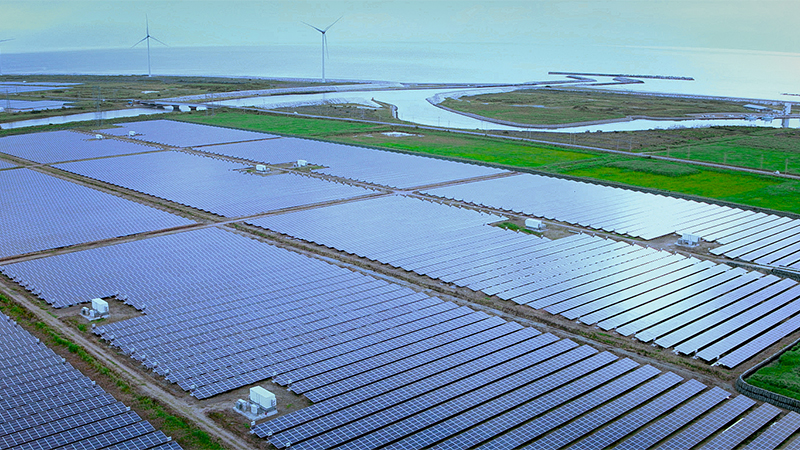History
History of Sumitomo Corporation
Origins of Sumitomo Corporation
Sumitomo Corporation's history dates back to the 17th century, when founder Masatomo Sumitomo opened a book and medicine shop in Kyoto. Masatomo wrote and left for posterity a document entitled "Monjuin Shiigaki (Founder's Precepts)," describing how a merchant should conduct business. To this day forming the roots of Sumitomo's Business Philosophy of pursuing integrity and sound management rather than easy gains, these teachings have been passed down and adhered to across the Sumitomo Group. Sumitomo’s copper refining business originates from adopted child Tomomochi of the second generation, whose real father developed a refining technique to separate silver and copper called "Nanban-buki" in the 16th century. Tomomochi inherited founder Masatomo’s Business Philosophy and estate affairs, and after that Sumitomo expanded with a focus on copper mining and related business. Embracing the credos of "Benefit for self and others, private and public interests are one and the same" and also "Planning imbued with a farsighted perspective," which, respectively, emphasize the importance of social contribution and an enterprising spirit, the Sumitomo Group has gone on to become Japan's leading corporate group in multiple fields such as finance, insurance, manufacturing, real estate and others. Sumitomo Corporation is a major player within the group.
Launch of Sumitomo Corporation and advance into trading business
Sumitomo Corporation was originally founded as The Osaka North Harbour Company Limited in December 1919. The company engaged in real estate management, conducting land reclamation in the Hokko (North Port of Osaka) area and the development of the surrounding areas, along with other activities. In 1944, the company merged with The Sumitomo Building Co., Ltd. and was renamed Sumitomo Real Estate Building Co., Ltd. In November 1945, the company was renamed Nippon Engineering Co., Ltd. and advanced into the trading business, handling products from Japan's major manufacturers as well as products manufactured by its own group companies. From then on, the company focused on trade, looking to expand both the range of products it traded and the industrial segments it operated within. In 1949, the company listed its shares for public trading on the Tokyo, Osaka and Nagoya stock exchanges.

Early period - Solidification of the management foundation (1950s)
The biggest challenge during the early period was the need to solidify the company's management foundation. Shunya Toji, who was the president of Nippon Engineering at the time and later became the first president of Sumitomo Corporation, encouraged his "amateur" employees, who were not well versed in the trading business, by telling them that "enthusiastic amateurs outperform professionals" every time, and strove to establish sound management through strict credit control and other means. The company also steadily expanded its presence abroad, posting an employee to Bombay (now Mumbai) for the first time in 1950 and establishing a U.S. subsidiary in New York in 1952. The company's name was changed to Sumitomo Shoji Kaisha, Ltd. in 1952, and its shares were listed on the Fukuoka Stock Exchange in 1955.
Reorganization for expansion (1960s)
The company set itself the goal of boosting its sales to become the third-largest trading company under the slogan of "Big Three," at the same time looking to increase its sales per capita. In 1962, the Osaka and Tokyo sales offices were consolidated and a product division structure was adopted to establish nine product divisions: Iron & Steel, Nonferrous Metals, Electric, Machinery, Agriculture & Fishery, Chemicals, Textiles, General Products & Fuel and Real Estate. In 1967, a project team was formed to promote large-scale projects, resource development and cultivation of new industries from a cross-divisional, medium- to long-term perspective.
Establishment of management foundation as an integrated trading company (1970s)
In 1970, a new Sumitomo Shoji Building was completed to house the Tokyo Head Office. This marked the establishment of a dual head office structure, with one in Tokyo and the other in Osaka. In the same year, the company merged with Sogo Boeki Co., Ltd. In 1977, the company set the goal of becoming the No. 1 company in terms of overall evaluation against financial and business criteria, as well as winning public support, under the slogan of "Big Three & The Best." In the mid 1970s, the number of overseas offices exceeded 100. In 1978, the English name of the company was changed from Sumitomo Shoji Kaisha, Ltd. to Sumitomo Corporation. Then, in 1979, a sales division system was introduced to establish four sales divisions - Iron & Steel; Machinery & Electric; Nonferrous Metals, Chemical & Fuel; and Consumer Products - and the empowerment of each was promoted. To celebrate the 60th anniversary of the company's founding, measures such as the strengthening of overseas business activities and the cultivation of new areas, among others, were vigorously promoted under the new slogan of "Open Eyes on All."
Vision of Integrated Business Enterprise (1980s)
In 1988, the company set out its vision of becoming an Integrated Business Enterprise, aimed at promoting business activities in addition to the existing trading activities in order to expand its earnings base by having two major revenue sources. A new slogan, "Seeing Tomorrow, Innovating Today," was adopted. Consolidated financial results were published in the fiscal 1989 financial report.
Reinforcement of global consolidated management - Establishment of Corporate Mission Statement (1990s)
In 1991, the medium-term management plan "Strategy 95" was formulated with the aim of realizing the Integrated Business Enterprise vision. In 1994, the development of a new earnings structure designed to respond to globalization was promoted under the slogan "Global Mind, Global Reach." Based on lessons learnt from an unlawful copper trading episode that came to light in 1996, a strict internal control system was put in place to prevent the recurrence of similar acts. In 1998, the Corporate Mission Statement was established, and the risk-adjusted return ratio was introduced as a new management indicator.
Implementation of Reform Package - Heading for a new stage of growth (2000s)
After the Reform Package was adopted in 1999, the company focused on strengthening its financial standing through the prioritization of businesses and improvement of profitability, as well as on reinforcing its business foundation by adding and enhancing the quality of prime assets, under a series of two-year medium-term management plans (Step Up Plan, AA Plan, AG Plan, GG Plan, "FOCUS '10," "f(x)"). In 2001, the Head Office was relocated to Chuo-ku, Tokyo. In 2003, the Sumitomo Corporation Corporate Governance Principles were established.
The Centennial and for the next 100 Years (2010s)
In 2013, for further accelerating the global consolidated revenue, the company introduced the Broad Regional Management System. In 2017, in order to ensure sustainability as a corporation and to provide solutions for social issues, the "Six Material Issues to Achieve Sustainable Growth with Society" were laid out. The Head Office moved once again in 2018, this time to Otemachi, and we have started development of work-style reforms. In 2019, the company created a new Corporate Message, "Enriching lives and the world" and celebrated its 100th anniversary.
Enhancement of sustainability management and creation of next-generation businesses (2020s)
In 2020, as part of our efforts to enhance our sustainability management, we identified six key social issues closely connected with our company and established long-term goals linked to these issues, similarly setting out medium-term goals the following year. In May 2021, we announced our Medium-Term Management Plan, “SHIFT 2023” and carried out structural reforms. In April 2024, we organized our conventional “Business Group” into “Strategic Business Units” (SBUs) based on each strategic goal, and thereby established nine “Groups”. We integrated the “Key Social Issues” undertaken thus far into “Material Issues,” to realize growth through addressing social challenges. In May 2024, we announced our “Medium-Term Management Plan 2026,” which is based on the theme of becoming a corporate group with “No.1 in Each Field” ― Enhance our competitive advantages to achieve growth through addressing social challenges.



